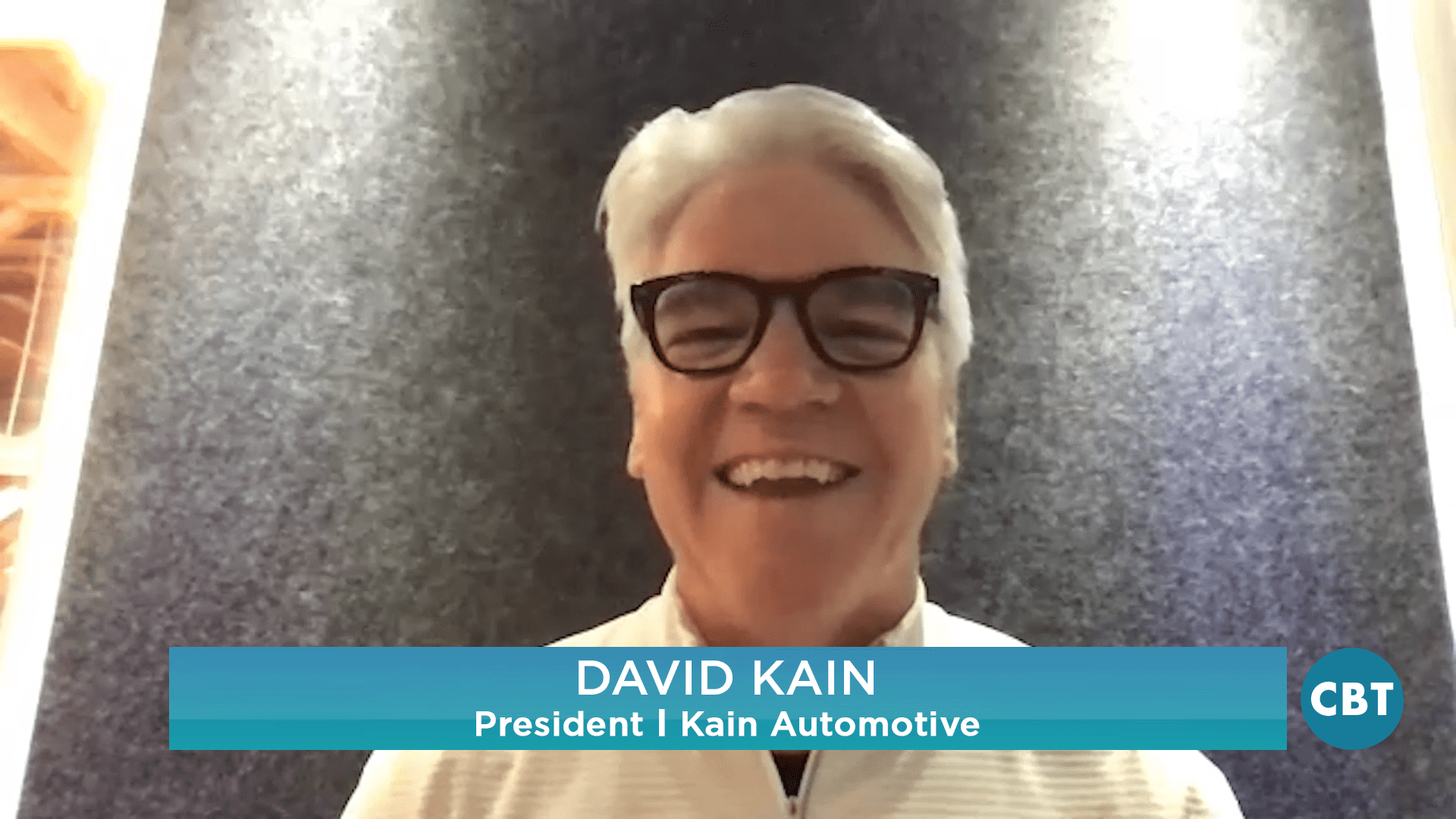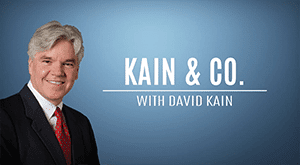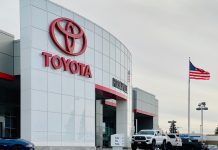In an increasingly digital world, it’s time to refresh old standards and set higher expectations for your dealership. If you’re brainstorming new models for your dealership’s marketing, BDC, and sales training efforts, then our next guest has some advice you don’t want to miss. Recently, we had the chance to speak with David Kain, president of Kain Automotive and host of Kain & Co. every Thursday on CBT News.
Related: Five Ways to Optimize Voicemails and Convert Leads for Your Dealership
Jim Fitzpatrick: David, thank you so much for taking the time out of your busy schedule to join us on CBT News.
David Kain: Great to be here with you.
Jim Fitzpatrick: Yeah, congratulations on all your success. I know you’re killing it out there for dealers. The reason that we want to talk to you today, David, was you wrote an article for us, How to Create an Efficient Business Development Dealership, kind of a BDD. Talk to us about that article and the concept behind it.
David Kain: Yeah. So Jim, it really was a natural outgrowth from a successful business development center concept in dealerships. We’ve been doing that for, I guess 17 years, as long as we’ve been in business, and we’ve set up hundreds of dealerships to do that. The common denominator that we were seeing is if a business development center is effective, we tend to create an unwanted outcome, which is salespeople who get a little casual about their own business development. So at that point in time, what feedback we were receiving is, hey, we’d like to have more appointments today. Get on those appointments. The people who showed up today didn’t have equity in their trade-in, needed more down payment. They were not really ready to buy. So hey, business development center as a salesperson, go get me better appointments. So when you create that kind of apathy if you will, in the store, it becomes a very unhealthy environment.
David Kain: So what we found was if we could get the business development activities of the salespeople, and I want to roll the tape back a little bit to 1982 when I started selling cars, we were trained to develop business. We went to restaurants. We went to facilities that maybe did concrete, or builders or wherever, and we met people and we grew our business that way. What we’ve seen over the last 10 to 20 years, and probably even longer than that, is salespeople work the register. They stand there and they wait for the customer to bring their purchase up, and then they’ll check them out.
David Kain: Certainly, that’s not the case with all salespeople, but there is a large band of salespeople who have walked away from the professionalism of true automotive selling, and we think business development is a key component of that. So combine a salesperson’s developing their own business along with the business development center, working customers and equity, perhaps lease renewals, working with customers in the service department, and then working leads and inbound phone calls, and you really have a business development dealership. That’s a concept that we’re really trying to fashion for our clients.
Jim Fitzpatrick: The idea that at the average dealership has 10 or 12 salespeople out there, and it’s a question of giving those salespeople something to do to drive more business. Rather than, to your point, just waiting around for that next busload of ups to come in, or customers that have already been online and they’re, 90% there through the sales process. Those deals are great to have, but that’s not what’s going to get you across the finish line, right? You’ve got all of this incredible manpower and this knowhow that’s sitting often untapped and unused on a showroom floor, and it’s really up to that dealer to show some leadership and the management team to get those people up and running, right?
David Kain: Yes, and they need leadership. Ultimately, it’s not a case of go make your calls, go send your emails, go mail your letters, it’s a case of let’s get together. We also like a concept that we call a social hour. Every day for an hour, we want one manager to lead the social ambition to where we not only communicate with the customers that have bought from us, but those who are prospects. Those who are friends, neighbors, people that we meet through our everyday occurrence. I remember when my barber was interested in a vehicle, another competitive make salesperson also was this customer. So we’re trying to, when we’re in the barber chair, sell a vehicle.
David Kain: The other thing is we’ve got to get out in the community. I remember when I first became a sales manager in the late 80s, it was one of those deals to where my salesperson, who was the number one on the board, I said, “Hey, we’ve sold side by side, but from this point forward you need to start coming into work early.” He said, “Well, I quit,” and I said, “Well, hold on. You can’t quit. Dad just promoted me. Please don’t do that. Let me do this. Let me hear what you do in the morning.” He goes, “Well, in the morning, I’m over at Sandy’s Steak House where they have breakfast. I sit around and I eat breakfast and I drink coffee and I commune with the people who want to buy cars, and one after another comes up and says, hey Bill, hey Bill, hey Bill, hey Bill. Then all those people that you’re opening the door for are people I’ve just had coffee and breakfast with. So that’s how I generate my business.” And I said, you can come in whenever you want. It doesn’t really matter.”
Jim Fitzpatrick: Do they have a lunch? Just stay there through lunch.
David Kain: The only thing I’m frustrated about is why are you waiting now to tell me?
Jim Fitzpatrick: That’s right.
David Kain: You could’ve stayed at the coffee shop. So that’s the concept and we’ve got to get out in the community. We put people’s nose up against the showroom window as though that’s some solution. But we’ve got to get out among people and salespeople are fun. They’re gregarious and they’re easy to like. We’ve got to put them in the right environment.
Jim Fitzpatrick: I started around the same time you did in the auto industry, and we had a day that we were given that where you had to take a specific vehicle out to either somebody’s home or a retirement community. They often have different affairs going on. I came up with this, learn how to buy a car from an industry pro. I’d go out there with my little slide program and my easel, and I would get a group of 10 or 20 a retirees in this community. They all drove because they would drive … buy their vehicles from our dealership and such.
Jim Fitzpatrick: It was really interesting because they would depend on this every month, and I’d buy them donuts. We’d have some fun with it, but they’d ask certain questions, how do you get more for your trade-in, and what’s leasing all about, and should I even consider that if I’m retired? We’d answer all those questions. It was like confessions of a professional car salesman that they would love. I don’t know. Some of them, I think, were there for the entertainment value if there was some, but I could trackback, every week, deals that I made from that group for sure. They felt comfortable because now, if they’re going into this Toyota dealership in that same market, they felt like they had a friend there. It can be very intimidating for a lot of first-time buyers, or elderly, or what have you.
Jim Fitzpatrick: This was in South Florida where the elderly population was just incredible, and they all had money to spend. There was never credit issues or what have you, but it was something that I did. I had a lot of fun doing it, and you’re right, those are the types of things that salespeople can do, and they just don’t realize it. They think that they’ve got a ball and chain that’s tied to their desk or what have you, in the showroom and they can’t go any further, which is just not the case.
David Kain: It’s so true, and I love that example. It’s fun, and they really did have a friend at the dealership. Most salespeople, really all they need is that launch, that opportunity, that vision that management gives them. I was lucky, Jim. My father’s 90 years old and he still charging up the hill and leading his team forward.
Jim Fitzpatrick: That’s great.
David Kain: A lot of what he shared with us was, there’s a lot of community groups out there, the JCs, the Lion’s Club, the Kiwanis and so on and so forth.
Jim Fitzpatrick: That’s right.
David Kain: Depending on your community, you can get out and get involved in that. Next thing you know, one guy buys a vehicle, then she buys a vehicle and he buys a vehicle, and then you’ve got a real crew of customers there.
Jim Fitzpatrick: I’ll tell you another. I got the idea to do this program from somebody that was in the dealership. He would work his church that he went to, and his church was a huge church. It had thousands of members, and he did this in the basement of the church every … I think it was every Thursday night or every other Thursday night, where he would have a learn how to buy a car from an industry pro. He worked that church and man, I’m telling you, probably 75% of his productivity every month, which was consistently 15 to 20 cars a month, came from that church, and it was just incredible how many people.
Jim Fitzpatrick: He took it a step further and said for every vehicle that is purchased from this church gathering, he would make a donation for $200 in that customer’s name back to the church. So the church was actually advertising it in the weekly pamphlet or the newsletter that went out. Learn how to buy a car from an industry pro in the basement of the church this Thursday night, and it was really something. He said, if you buy a car from us, then we give 200 bucks, so it’s a win-win.
David Kain: I love that, saving souls and selling cars. I think that’s a genius–.
Jim Fitzpatrick: Even in this digital world, you can still do those kinds of things. People love it.
David Kain: Completely. Yeah, and that’s the beauty of it. New technology nowadays, everybody’s got their own production company right there in their pocket, and all we’ve got to do is to do a conversation with somebody and tell them something useful, and that’s interesting. I was with one of our clients up in Louisville, Kentucky, the Bachman Automotive Group. They’ve got a salesperson there, Mike Davenport. I believe he’s probably been on your show before, and he’s known as the Chevy Dude on YouTube, and 210,000 subscribers. Then you’ve got Toyota Jeff over in Raleigh, North Carolina, and 37,000 subscribers. These self-made, high effort, big return type of salespeople go out there and building their reputation through the means of technology is remarkable, and I applaud their efforts.
Jim Fitzpatrick: Hey, thanks for all your time. Before you leave, I want to talk a little bit about some of the takeaways from this year’s NADA convention, which was just a few weeks ago. Our feedback was that, or that we were getting from the dealers and the vendors was that it might’ve been one of the best shows in 10 years or longer. I mean it seemed as though the attitude of the dealers was nothing but positive about our future, the industry that we’re in. Vendors were making a pile of money because dealers were out there spending in new technologies and things of that nature. So what did you find and what were some of the takeaways that stood out?
David Kain: Well yeah, I was very impressed, and the feedback has continued go really strong from that. The real key is leveraging technologies and in our field, artificial intelligence and marketing using machine learning and techniques that really take away some of the pain point from developing. You know this from your experience with Force Marketing and what John and Heather and them are doing over there. I mean it’s absolutely remarkable what technology can do to boost the awareness and to find the in-market shoppers. So that level of technology integration in marketing and communications, I think is going to be persistent going forward. Also it was always good to see new technologies innovate. We’re starting to see from the web presence, a lot of good activities there. Facebook and the Google presentation, joint presentation was really influential over me as far as some of the information that was shared there in consumer behavior. So consumers love buying cars. We’ve just got to continue to make it easier and easier, and I saw that as a theme throughout the conference.
Jim Fitzpatrick: Yeah, that’s for sure. I did too. We spoke to the people at Cox Automotive, Jonathan Smoke, who’s one of their chief economists over there, he said the– is going to drop in 2020 on the new car side by 3 or 400,000 vehicles. Sounds like a lot. Obviously it’s not a lot because we’re flying at such a great altitude right now, or have been for the last five or six years in the auto industry. However, used car sales are going to be up again and probably taking some of those new car buyers out of the new car showroom and putting them in the used car showroom, which I found interesting. But it’s still, it’s going to be another barn burner in the overall industry.
David Kain: Yeah, and you and I’ve lived through a lot of shifts in the industry. That’s going to be a challenge for acquisition. Having the opportunity, and the best way to get a good used car is to sell a new vehicle. So we’ve got to start working our service lanes, work on our customers and equity, make sure that our database is very much attended to. Those customers that we tend to abandon a few weeks after the purchase really need to have someone attached to them, and the dealership build on that.
Jim Fitzpatrick: I agree.
David Kain: So agree brand, the new branding is the experience, and I’ve heard that over and over this year. I think we’ve got to really concentrate on that experience for the buyer.
Jim Fitzpatrick: Thanks for all the time that you’ve given us, and thanks again for all your contribution on Kain and Company here at CBT. For those that are watching, make sure you tune in, Kain and Company every week. We’re pushing it out there and David’s fighting the good fight for you. So again, thanks so much, really appreciate it.
David Kain: Thank you Jim. Have a great day.
Jim Fitzpatrick: Thanks, you too.
CBT Automotive Network, the number one most-watched network in retail automotive. This has been a JBF Business Media production.









